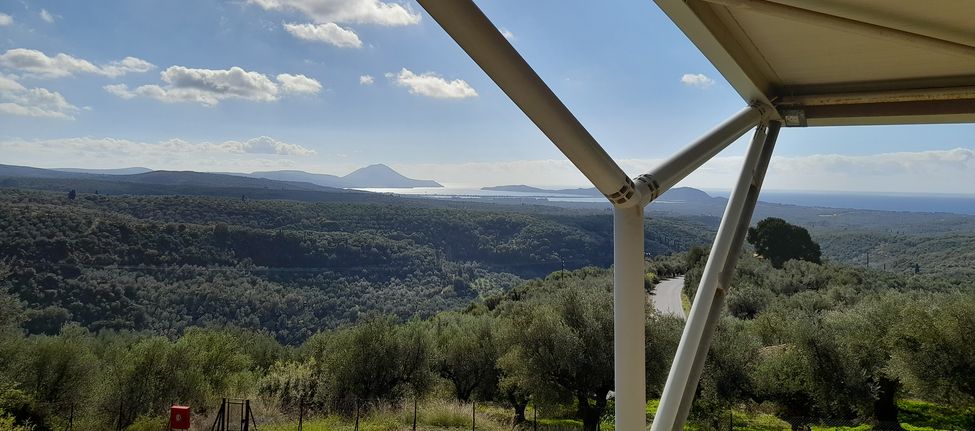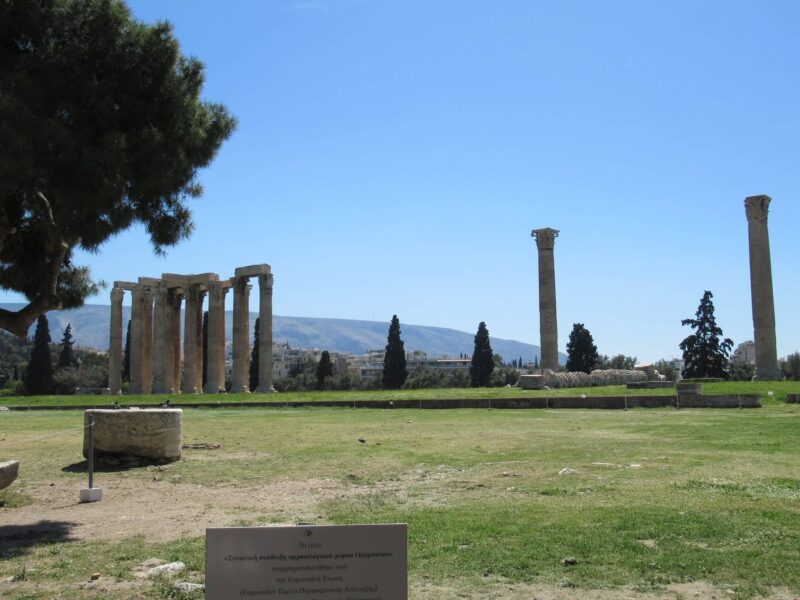The road climbs, winding through olive groves. The view of Navarino Bay is breathtaking at every turn. Signs point to Mycenaean tombs in the middle of olive groves… One last turn and you’ve arrived: the Archaeological Site of Ano Eglianos. Welcome to the home of the wise king of the Iliad, Nestor’s palace. Immerse yourself in Mycenaean Greece!
King Nestor, one of the great Homeric figures
Ano Eglianos is 17 km from the charming town of Pylos in Messinia, in the south-western Peloponnese. Visit Nestor’s palace, the most important remnant of a Mycenaean city alongside Mycenae and Tyrinth. The main body of the palace was built in the 13th century BC. This venerable king was the son of Neleus and grandson of the god Poseidon. According to Homer, he was respected by all the Greek leaders of the Trojan War for his wisdom and insight.
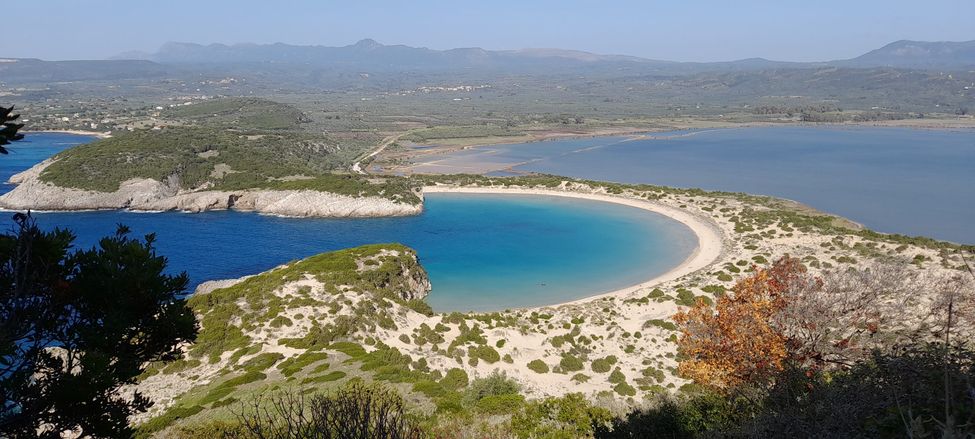
We find King Nestor in rhapsody III of the Odyssey: Telemachus, son of Ulysses, arrives in Pylos in search of news of his father. There, on the famous bay of Voïdokilia, according to several theories, Nestor and “the Pylians, on the shore of the sea, made sacrifices to Poseidon”. The old king welcomes Telemachus. He leads him “to his beautiful home”, where he is lavished with all the honors befitting a prince. “The beautiful Polykastè, the youngest daughter of Nestôr Nèlèiade, bathed Tèlémakhos and, after having bathed and perfumed him with fatty oil, she clothed him with a tunic and a beautiful cloak”. Well, the pool where Telemachus bathed can still be found in King Nestor’s palace! At least, a bathtub from that period can be seen on site, and it’s in very good condition.
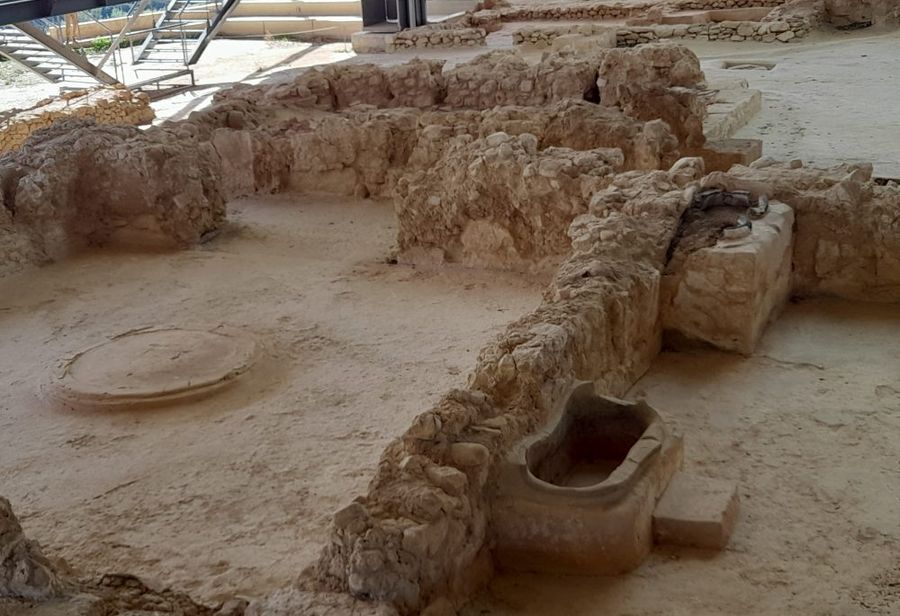
Nestor’s palace, an immersion in the Mycenaean world
The site has recently been renovated and, although little remains of the original palace, the visit is very interesting indeed. A structure shelters the remains, protecting buildings and visitors from the sun and bad weather. Archaeologists were able to make a faithful reconstruction of the building. A panel in each part of the palace shows the original appearance of the site. In an adjacent building, you can watch videos of the excavations and the objects found on site, with explanations that are not at all off-putting!
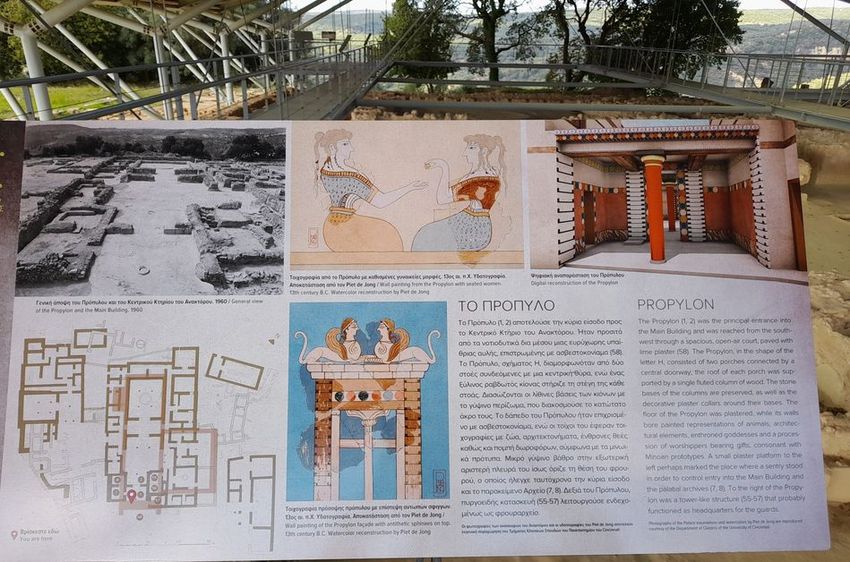
The throne room, where the king’s throne can be seen, is built on the architectural model of Mycenaean palaces, the Megaron: a large circular hearth in the center of the room with an opening in the roof to allow smoke to escape, four pillars holding up the framework and walls covered in colorful frescoes.. To reach the king, you had to pass through a series of waiting rooms and antechambers manned by guards. At the far end, behind the throne room, were warehouses where wine and oil were stored. Jars embedded in the ground are still visible. Archive rooms, the courthouse, a second, smaller “megaron”, Telemachus’ famous bathroom and workshops complete the ensemble. We can also see the start of the stairs leading upstairs.
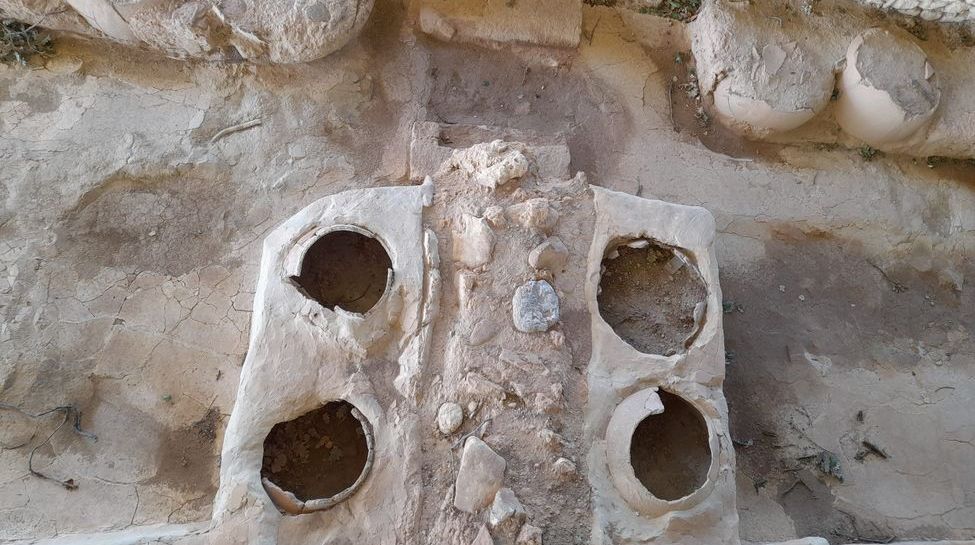
A destructive fire reveals a world
A large part of the structure was made of wood. So.., the fire that broke out around 1180 BC. He destroyed the entire floor and the pillars.. All that remains of the walls are the foundations. But this catastrophe had one happy consequence, for us at least. In the palace warehouses, several hundred raw clay tablets, most of them bearing accounting information, were baked by fire. These inscriptions, written in Linear B, the writing system used in the Peloponnese and Crete, were deciphered in 1953 by English architect Michael Ventris. His work has provided invaluable information on Bronze Age Greece. They also proved that the language spoken by the Mycenaeans, as early as the 14th century BC. J.C., was Greek. And the town was already called Pylos !

The Ano Eglianos site, an infinite digging ground
From the footbridge above the remains or from the garden around the archaeological site, you can see the sea, the Bay of Navarino and the Gialova lagoon. Together with the mountains and hills with centuries-old olive trees, it’s a beautiful place. In ancient times, the location of cities and sanctuaries was very important. He had to charm locals and visitors alike, but also keep watch over the widest possible area. The ancient Greeks knew how to combine business with pleasure!
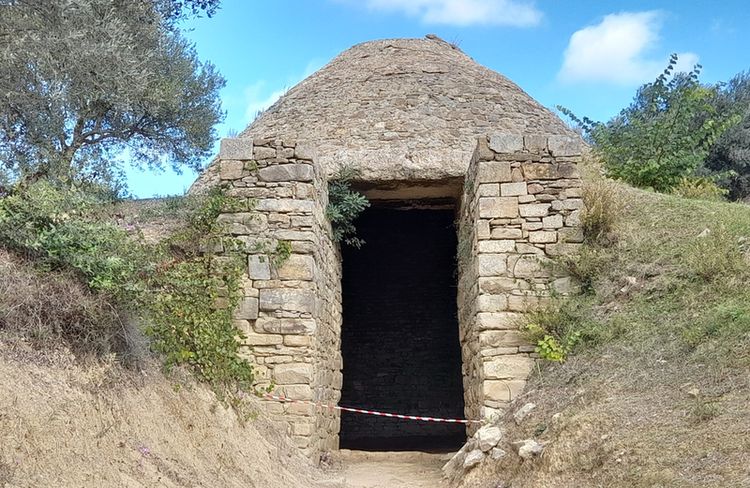
Very close to the palace, we visit a domed tomb, Tholos in Greek. Built around 1500 BC. It was used for at least 17 funerals over 2 or 3 centuries. Excavations are still underway on the Ano Eglianos site. In fact, in 2015, American archaeologists found an important tomb. Nestor’s palace still holds many secrets!
Practical info, further information
Ano Eglianos site, Chora Messinias, Tel. +30 27630 31437 – Nestor Palace on Google Maps –
Opening hours: every day except Tuesday (public holidays on request).
- April 1 to August 31: 8 a.m.-8 p.m.
- September 1 to 15: 8:00 am – 7:30 pm
- September 15 to 30: 8.00 am – 7.00 pm
- October 1 to 15: 8:00 am – 6:30 pm
- October 15 to 31: 8 a.m.-6 p.m.
- November 1 to March 31: 8:30 a.m. to 3:30 p.m.
Prices : Full price €10, Reduced rate 5€. More infos on Odysseus Culture
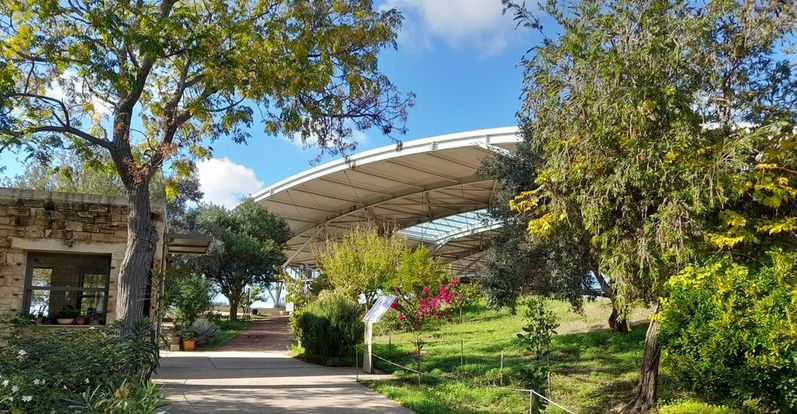
Most of the artefacts found at Nestor’s palace are on display at the Chora museum, 4km from the archaeological site. The museum is currently being renovated and is due to reopen in 2026. Some of these objects, as well as tablets in linear B script, can be seen at the Archaeological Museum in Athens.
Discover the surroundings of Nestor’s palace
To complete the visit to sites linked to King Nestor:
- The bay of Voïdokilia: in addition to the beach, one of the most beautiful in Greece, you can visit the remains of the Mycenaean tomb of Thrasymedes, son of King Nestor, on the promontory overlooking it. Take the path at the entrance to Voïdokilia. There is very little left, but there is a beautiful view of the surrounding area.
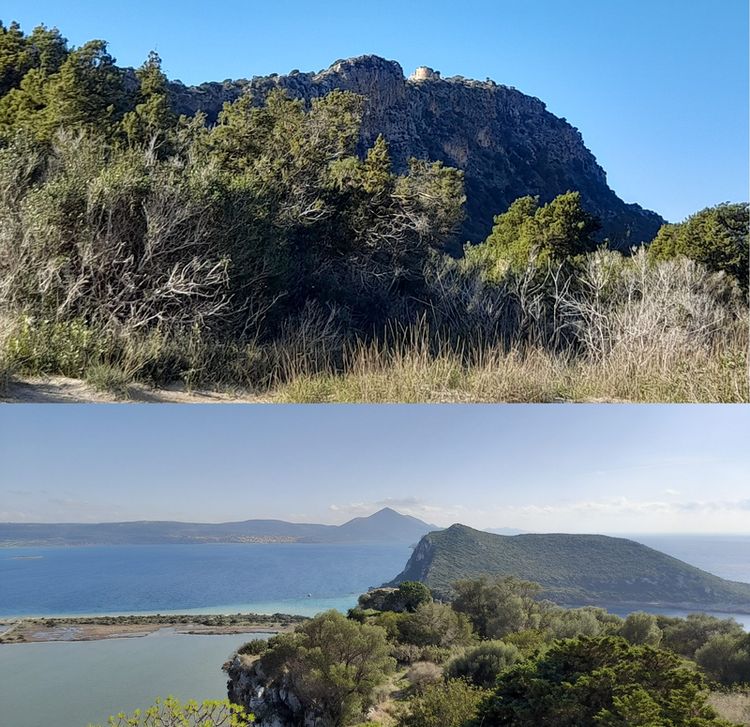
- Palaiokastro fort: At the end of the bay, climb the dunes and follow the path (sometimes a little steep) to the Venetian castle. This is where Koryfassion, the acropolis of Pylos, is located. We understand that the site was of great strategic importance, since it dominates the bay, the sea passages and the Ionian Sea from a great distance. Halfway along, you can enter Nestor’s cave. Not to be missed! Walking shoes strongly recommended
- Niokastro, the citadel of Pylos: in the museum inside the fort, there’s an exhibition on Mycenaean civilization and the various sites in the region, also a very nice place to visit.
Evi S.
Messinia is a little-known region, but well worth a visit. In our articles you will find :
